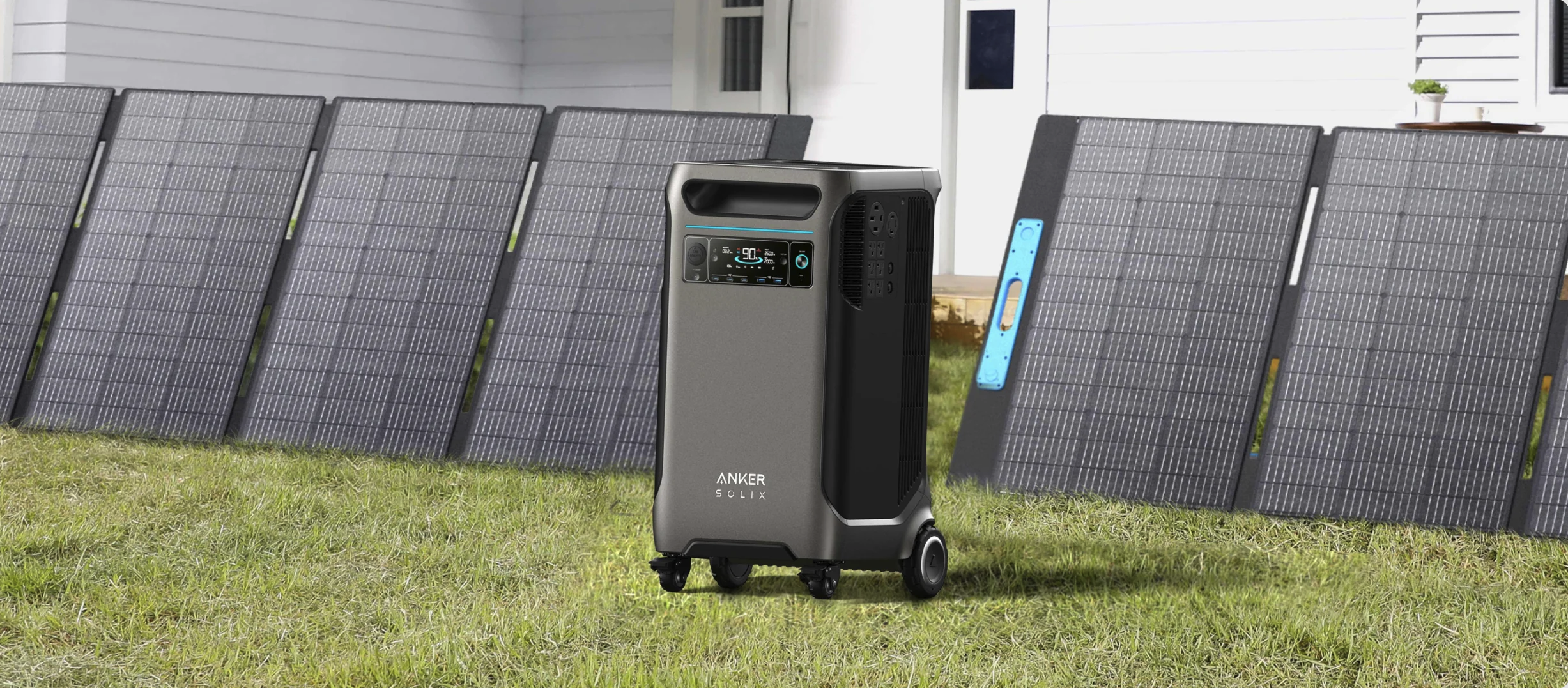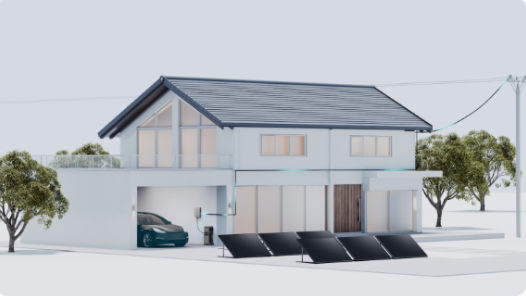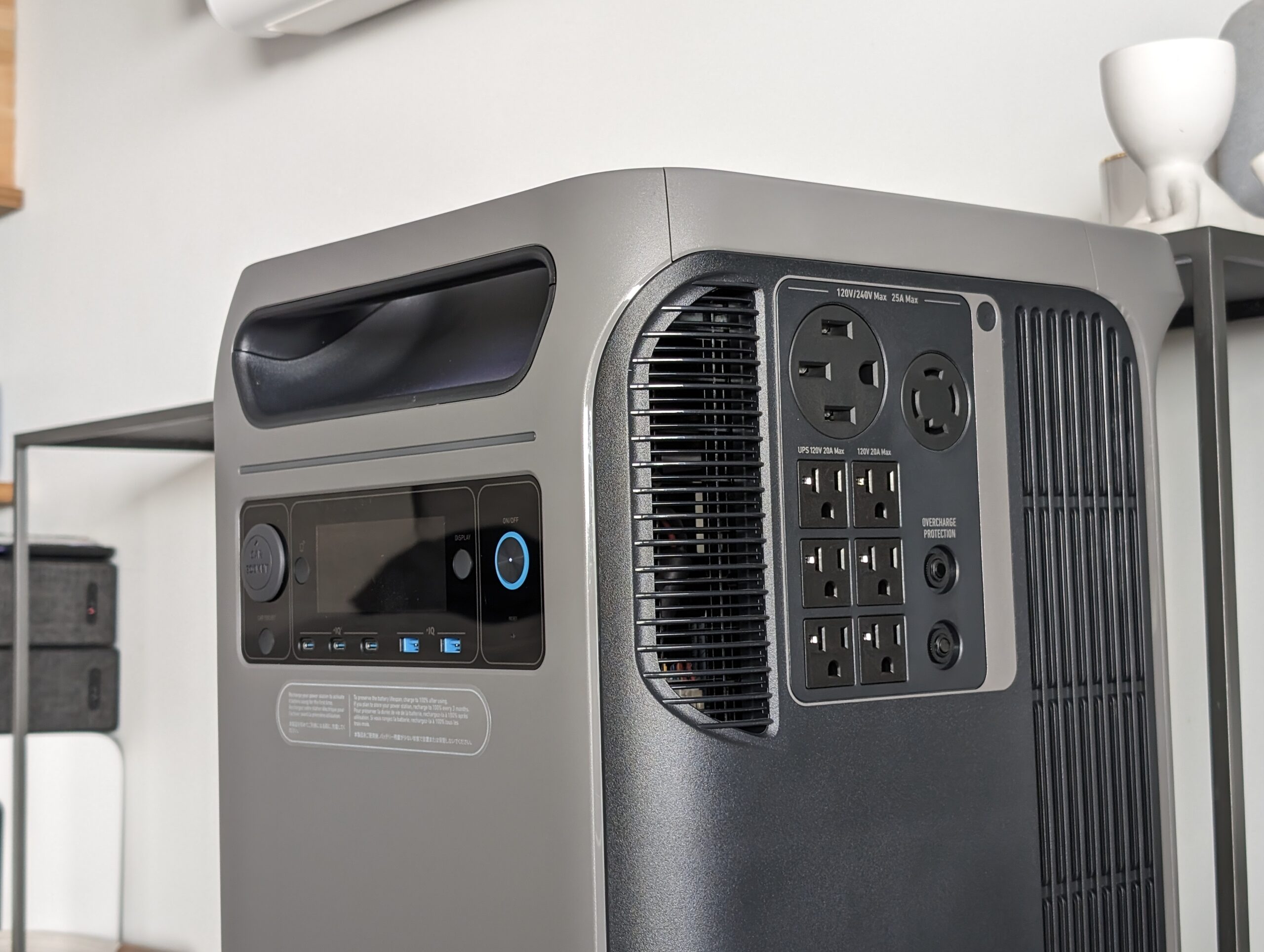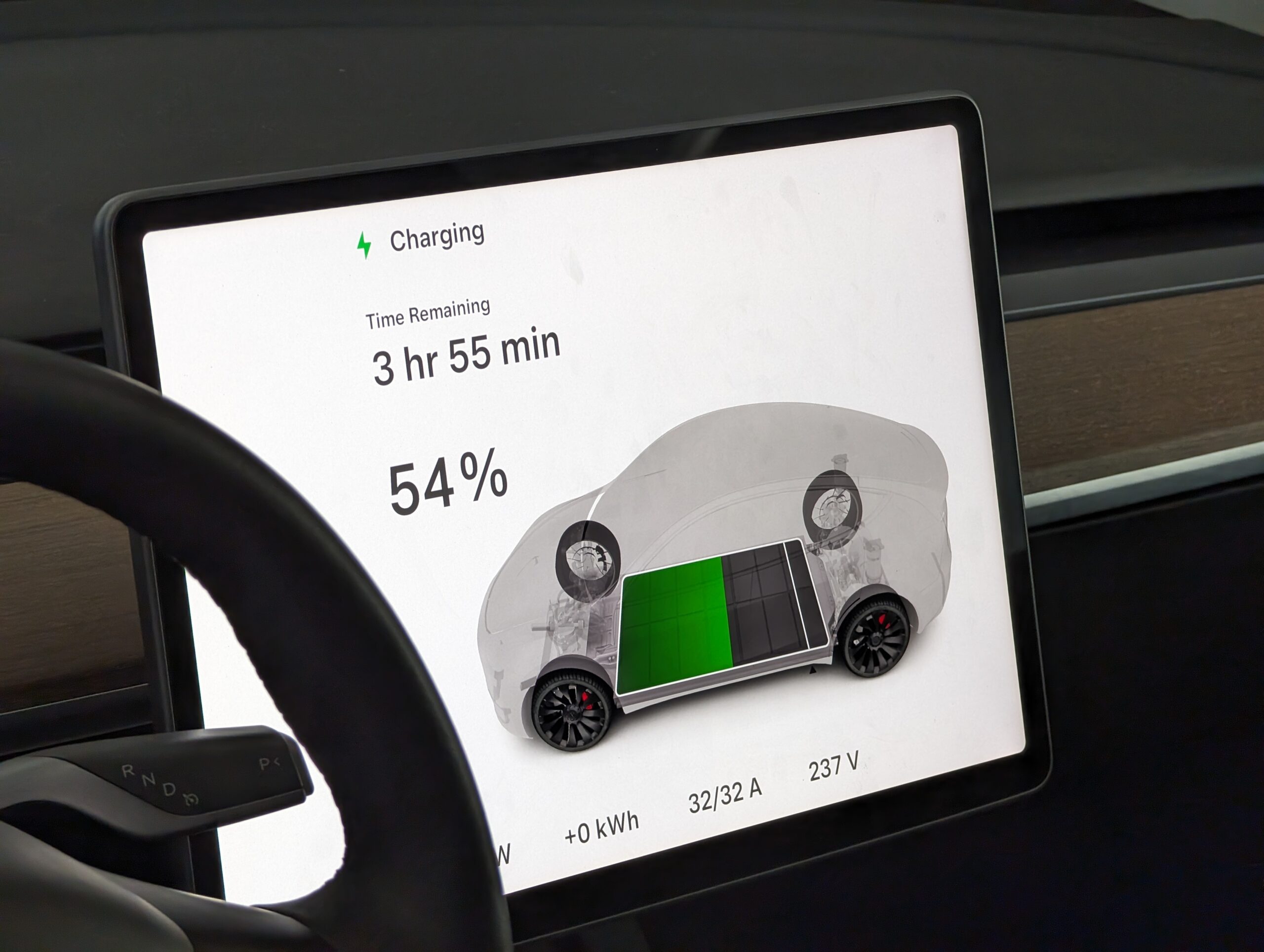Sign up for daily news updates from CleanTechnica on email. Or follow us on Google News!
The Anker SOLIX F3800, combined with the new Home Power Panel, is the most accessible whole-home backup power system around right now. It can power your home in a power outage, can be used as a comprehensive backup solution for off-grid homes, and function as the hub of a permanently installed solar energy system for everyday use, seamlessly harnessing the sun to power your home.
Anker made a name for itself in the consumer electronics space over the last decade with a range of affordable yet durable USB chargers, cables, and batteries. Among a sea of single use generic brands, Anker stood out as a brand consumers could trust, and as a result, its products found their way into millions of homes around the world including ours.
After a wildfire burned our home to the ground in 2017, we went straight out to buy the whole range of Anker USB chargers, cables, power strips, and power stations, and they just continue to perform. Because of the strength of their brand and the durability of their products, we were excited to see them move into the portable power station business over the last few years. A handful of small yet powerful devices have helped them gain a foothold with increasingly larger units being released over the following months.

It felt like a natural evolution that led Anker to the intersection of portable power stations and the home stationary storage market. Anker didn’t bat an eye and simply charged into the space with the launch of its SOLIX brand, with the F3800 as the flagship product.
Anker SOLIX Home Power Panel is the vital product of Anker SOLIX F3800 Home Power System. Compatible with one or two units of Anker SOLIX F3800, you can establish a smart whole home energy system. Anker SOLIX F3800 can power your home with the grid and the rooftop solar simultaneously via AC coupling. You can store excess energy generated by your solar panels during the day for use at night, or it can automatically provide an instant backup power supply for your home in the event of power outages.
If your home doesn’t currently have rooftop solar and you have no plans to install it, you can still harness solar energy by using rigid or portable solar panels in conjunction with the Home Power Panel and Anker SOLIX F3800. These options can provide you with a home power system that reduces electricity bills and allows you to make the most of solar energy. Additionally, this system can be integrated with the grid to power your home.

The Anker SOLIX F3800 utilizes iron phosphate battery cells, also known as LiFePO₄, as the energy storage for the unit. This chemistry is known for its ability to withstand heavy use, thousands of cycles, and a 100% depth of discharge which is something more traditional lithium-ion based packs simply cannot do.
In addition, iron phosphate cells are extremely thermally stable, meaning it’s nearly impossible for it to have thermal issues in the event of physical damage to the cells themselves. This makes it the ideal chemistry for stationary storage but historically, its low energy density made it less preferred for portable applications. As a result, the Anker SOLIX F3800 is a girthy unit, with a whopping 3,840 Wh / 3.84 kWh of storage capacity that strains the definition of portable at 132 pounds.
This can be expanded up to an incredible 26.9 kWh thanks to its Modular Pack Design. Up to 6 expansion battery packs can be jacked right into the Anker SOLIX F3800 to let you purchase exactly the right amount of storage for your application. It’s also a great way to get started with a large power station with the knowledge that you can always add more capacity in the future as your needs change. Old and new Anker battery packs play together nicely, ensuring a long lasting solution for your energy needs.

Iron phosphate battery cells have continued to improve in recent years, so the higher weight and larger volume penalties for using them isn’t as high as it was just a few years ago. On the other hand, it seems like the perfect chemistry for a semi-portable power station like the Anker SOLIX F3800.
Charging
Anker sent us the Anker SOLIX F3800 to review and we were eager to get started. Before we could start playing with it, we had to get it charged up. This can be done with a standard wall cable from any AC outlet. Out of the box, it defaults to pulling 1,600 watts from the wall, though it can support up to 1,800 watts peak AC charging. The charging speed can be adjusted with the Anker smartphone app.
To confirm this, we plugged it into the wall and tuned the charging speed down to a meager 1,000 watts to top it up for its first charge. In the online manual for the Anker SOLIX F3800, Anker recommends fully charging the unit before its first use and we happily obliged.

If AC charging isn’t your thing, you can also recharge the unit from a standard 12 volt automotive outlet at 120 watts or directly via solar. If you’re using it as a backup power solution from your home, plugging it into the home’s AC system probably makes the most sense, but you can add more energy security with some solar panels.
The Anker SOLIX F3800 also supports charging directly from solar panels from 11-60V through an XT-60 connection. For 11-32V solar chargers, it can pull in a maximum of 10 amps and with 15-60V solar chargers, that gets pushed up to 27 amps max.
The Anker SOLIX F3800 can accept up to 2,400 watts from portable solar panels, which are great if you’re using the Anker SOLIX F3800 in an RV, trailer, or as a backup power solution. Just unfold the panels, connect them up with the included MC4 link cables and you can start harvesting organic, free range photons from the sun.

For more permanent setups, you can also wire it up to a hardwired fixed solar installation which bumps the maximum solar it can drink up to 3,800 watts when connected to a Home Power Panel. These installations do require professional installation and additional hardware to get them wired up, but the benefits are obvious.
Wiring the Anker SOLIX F3800 into your home with the Home Power Panel with some fixed solar panels on the roof transforms it from a nice-to-have unit into the heart of your home’s electrical system. It drinks up excess solar power and stores it for the day you need to keep your home running when the grid goes down. That’s true energy independence.
Using the Anker SOLIX F3800
To really put the Anker SOLIX F3800 to the test, we took it out of the kitchen where we normally stress test portable power stations and went straight into the garage. I brought out an array of power tools including angle grinders, sawzalls, drills, and yes even a welder.
I’m a hack at welding but I can reliably get things to stick together and they seem to hold up to abuse, so that’s something. I plugged my Lincoln Electric multiprocess machine into the Anker SOLIX F3800 and got all my supplies set up. As a professional hack, I was welding on the floor of the garage as usual and laid down a few beads on some scrap material.

The Anker SOLIX F3800 didn’t bat an eye and just kept pushing power to the welder. I lay down a few beads for about 10 minutes and the welder had no issue with the power supplied from the Anker SOLIX F3800. The power ranged from zero when not pulling the trigger on the welder to 30 or 40 amps as it ramped up before quickly spiking to 2,000 to 2,550 watts when actively MiG welding.
The unit had no issues supporting this load or the wide range of power tools I used to prep the weld surface and get the material trimmed up. The Anker SOLIX F3800 can support up to 6,000 watts of power output so it wasn’t so much a test of the max wattage it could handle, but just the pure intensity of a welder and power tools which can often draw power very quickly and at high loads.
The Anker SOLIX F3800 truly bridges the gap between portable power stations and fixed batteries designed to be bolted in place in a battery wall for your home. It can be used completely by itself or directly wired into your home’s electrical panel, depending on what you need it to do. You can add capacity to it by purchasing expansion batteries or take just this core unit with you. It is one of the most capable, flexible systems we’ve seen and from the looks of it, there isn’t much the Anker SOLIX F3800 can’t do.

The Anker SOLIX F3800 can be used as a portable unit and comes equipped with four wheels and even a luggage-style handle that allows you to move 132 pounds / 60 kilograms of mass around without too much trouble. It’s not something you’re going to take to the park or probably even out on a camping trip, but it’s fine for moving it around the house or maybe out to your off-grid cabin to keep the lights on and all your appliances running while you’re out enjoying nature.
It would also be a great candidate for use in an RV, where you could temporarily move it from your house into the RV, keeping the unit charged up from the vehicle’s alternator or a rooftop solar system.
As a special hack, the Anker SOLIX F3800 can also be used to charge up your EV without any additional hardware. Every other portable power station we’ve reviewed had issues with this because EV chargers error out. This can be hacked with a ground loop plug, but Anker solved this natively with the Anker SOLIX F3800.

Plugging an AC EV charger into the Anker SOLIX F3800 returns the typical error on any charger. Anker added a special button to enable 240 volts output specifically for EV chargers. To activate this mode, double press the 240 volt power switch and the unit mixes things up internally to enable EV charging without having to buy any additional hardware.

We tested this with our 240v Wallbox Pulsar Plus AC charger, a gen 3 Tesla Wall Connector, and a 110v Mercedes wall charger. None of them were able to use the unit natively in 110v mode but easily connected to the unit and were able to charge from it using Anker’s 240 volt power switch. Much success!
The Anker SOLIX F3800 can run in 3 different operating modes to suit a range of applications:
- Self-Consumption Mode:
The Anker SOLIX Home Power Panel can monitor the power output from both the rooftop solar system and the grid, or can also monitor the power output from the rigid solar panels/portable solar panels and the grid. Consequently, it can recharge the F3800 with excess solar energy and utilize the stored power to supply the house during periods of low solar production, thereby enhancing solar energy utilization efficiency.
- Time-of-Use Mode:
Setting the On/Off-peak mode via the Anker App lets you power your home during peak times and recharge the F3800 during off-peak times, thereby helping you to save the electricity bill long-term. Its internal Smart Energy Management system works with Anker’s Energy Optimizer to decide when to use energy from the sun, the battery, or the grid to keep your bills low.
- Automatic Backup Mode:
When a power outage happens, the Anker SOLIX Home Power Panel will automatically switch to the F3800 as the power source to supply up to 12 circuits connected in the backup load center. With proper circuit planning, the 6,000W AC output and 120V/240V dual voltage allows the possibility of achieving whole-home backup.
Overall
The Anker SOLIX F3800 fills an important gap between portable power stations and home energy storage systems. It’s an awkward space, but Anker has done an admirable job of building a flexible, scalable product that delivers not only the functionality, but the form factor that makes it capable of living in both of these worlds without too much of an issue.
At 3.84 kWh of energy storage, it is a massive amount of capacity for a portable unit and there’s no getting around the Anker SOLIX F3800’s 132 pound weight. On the flip side, 3.84 kWh of storage is not a ton of power when you’re looking at powering your entire home. The average home in America uses 11 kilowatt-hours of electricity per day, so this would really be only for supporting critical loads or as a backup system.
Anker knew that and made it possible to add more battery packs, daisy-chaining them into the Anker SOLIX F3800 so you can literally build the perfectly sized system with the right amount of storage for your needs. Its iron phosphate battery chemistry gives homeowners the peace of mind that the batteries are extremely stable and will provide a long life without issues.
For more information about the Anker SOLIX F3800, head over to the Anker SOLIX F3800’s digital home.
Disclaimer: Anker generously sponsored this article and provided the Anker SOLIX F3800 to the author free of charge for the purposes of this review.
Specs
- MSRP:
- Battery Chemistry: Lithium iron phosphate battery cells
- Storage Capacity: 3,840 wh / 3.84kWh, expandable up to 26.9kWh with up to 6 optional Anker SOLIX BP3800 expansion batteries thanks to its Modular Pack Design
- Weight: 132.3 pounds / 60 kilograms
- Included accessories: AC charging cable & two MC4 3-Port Solar Charging Connectors
- Connectivity: Monitor energy input and output from the Anker app. Connects with Bluetooth and Wi-Fi.
- Warranty: 5-year warranty
- Protection: No Risk of Fire and Shock
Power input
- AC charging (120v wall outlet): 1,800 watts
- DC charging (solar): 2,400W solar input max, for a peak charge of 0 to 80% in 1.5 hours with solar
Power output
- AC output ratings: 6,000W, 120V/240V split-phase output
- AC output ports: NEMA 14-50 and L14-30 outlets onboard to directly charge your EV and RV
Have a tip for CleanTechnica? Want to advertise? Want to suggest a guest for our CleanTech Talk podcast? Contact us here.
Latest CleanTechnica.TV Videos
CleanTechnica uses affiliate links. See our policy here.
CleanTechnica’s Comment Policy




